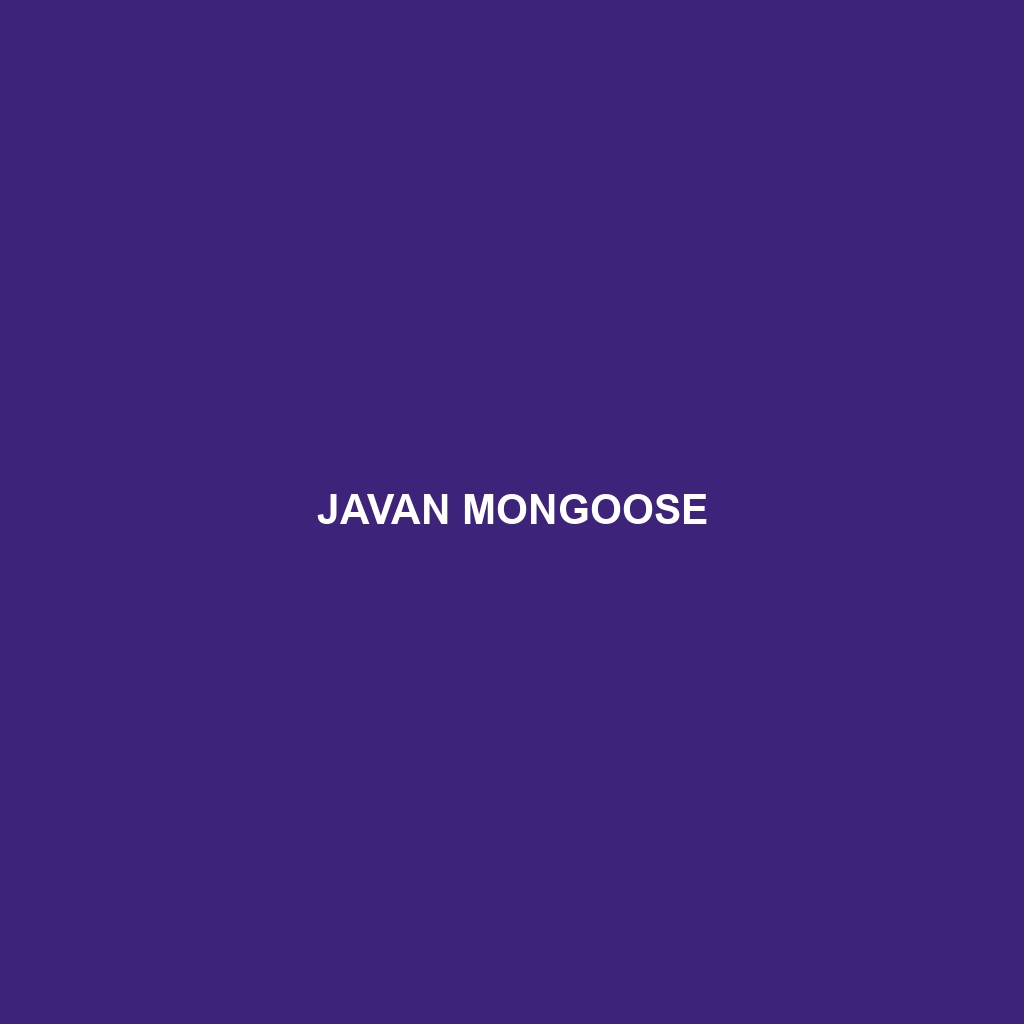Indian Brown Mongoose (Scientific Name: Herpestes fuscus)
Common Name: Indian Brown Mongoose
Scientific Name: Herpestes fuscus
Habitat
The Indian Brown Mongoose primarily inhabits the grasslands, forests, and scrublands of the Indian subcontinent. It is frequently found in countries such as India, Sri Lanka, and Nepal. This species thrives in both rural and urban settings, making it adaptable to various environments including agricultural lands and human settlements.
Physical Characteristics
The Indian Brown Mongoose typically measures between 50 to 60 cm in length, with a bushy tail that is about two-thirds the length of its body. Its fur is predominantly brown, offering excellent camouflage in its natural habitat. This mongoose has a slender body, elongated snout, and sharp, pointed ears. Adults can weigh around 4-6 kg, and their agility is one of their most distinctive traits, aiding in their survival.
Behavior
Native to its environment, the Indian Brown Mongoose is primarily diurnal, being most active during the day. It is known for its social behavior, often seen in small groups. These mongooses are territorial, using scent marking to define their living space. Their curiosity and boldness often lead them to explore human habitats, which can sometimes result in conflict with humans.
Diet
The diet of the Indian Brown Mongoose is omnivorous, consisting mainly of insects, small mammals, birds, and reptiles. They are particularly known for their ability to hunt and consume venomous snakes, showcasing their agility and keen reflexes. Their feeding habits contribute to pest control within their ecosystems by managing populations of small vermin and insects.
Reproduction
Indian Brown Mongooses breed throughout the year, although peaks in breeding may occur during the warmer months. Female mongooses typically give birth to litters of 2-4 pups after a gestation period of around 60-70 days. These pups are born blind and depend on their mother for nourishment and protection during their early weeks.
Conservation Status
Currently, the Indian Brown Mongoose is classified as “Least Concern” by the IUCN Red List, but it continues to face threats from habitat destruction and human activity. Conservation efforts are essential to maintain its population, especially in regions where urbanization is accelerating.
Interesting Facts
One fascinating aspect of the Indian Brown Mongoose is its ability to tolerate certain snake venoms, allowing it to prey on dangerous snakes like cobras. Additionally, their quick reflexes and agility grant them remarkable survival skills in the wild.
Role in Ecosystem
The Indian Brown Mongoose plays a significant role in controlling pest populations within its ecosystem, thus maintaining ecological balance. By preying on small mammals and insects, it helps in regulating these populations, which would otherwise overflow and disrupt local environments.
